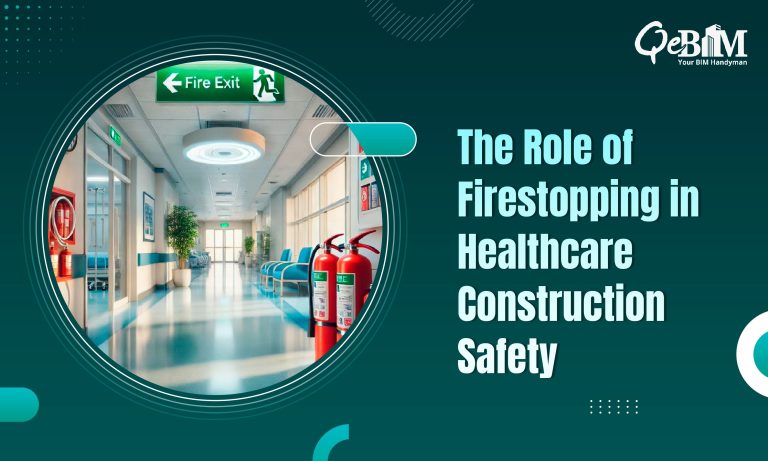The Role of Firestopping in Healthcare Construction Safety

In the complex and highly regulated world of healthcare construction, the patient’s safety is paramount. Right from the advanced medical technology installations to the air quality systems as well as the structural integrity, every element of a healthcare facility must be meticulously planned and executed. Among these, firestopping stands out as a critical yet often overlooked component that plays a life-saving role in the fire safety strategy.
What is Firestopping?
Firestopping refers to the use of the fire-resistant materials and systems to seal the openings and joints in the fire-rated walls and floors. These openings are typically created during the installation of plumbing, electrical, mechanical and data systems. The primary purpose of the firestopping is to prevent the spread of fire, smoke as well as the toxic gases through these penetrations thereby effectively compartmentalizing the structure during a fire event.
Fireproofing vs. Firestopping – What’s the Difference?
Though the terms are sometimes used interchangeably, fireproofing and firestopping serves very different purposes:
- Fireproofing is the application of the fire-resistant materials (like sprays or coatings) to structural elements such as steel beams and columns. It serves to uphold the structural stability during a fire by insulating these components from the extreme heat.
- Firestopping on the other hand focuses more on sealing penetrations and gaps in the walls as well as the floors that are already fire-rated. It is not about structural stability but about compartmentalizing fire to prevent its spread through the service openings.
In healthcare construction both are crucial but firestopping directly supports the patient safety, infection control and code compliance related to the internal spaces and utilities.
Why Firestopping Matters in Healthcare Environments?
1) Life Safety and Patient Protection
Hospitals and healthcare buildings house vulnerable populations who may not be able to evacuate quickly. Firestopping buys crucial time for evacuation and response by slowing the spread of fire and smoke hence ensuring that the safe zones and escape routes remains intact for longer period of time.
2) Code Compliance and Accreditation
Healthcare construction must adhere to the stringent fire safety codes like NFPA 101 i.e. The Life Safety Code along with the local building regulations. Improper or missing firestopping can result in the failed inspections, delays in occupancy permits and even the loss of licensure or accreditation.
3) System Integration in Complex Infrastructure
Modern healthcare facilities rely heavily on the extensive MEP systems. Each penetration made for pipes, conduits or ductwork introduces a potential path for the fire to spread. Here, the MEPF BIM Services becomes indispensable thereby enabling the accurate modeling of all systems and ensuring the proper coordination along with the placement of the firestop assemblies before even the construction begins.
4) Prevention of Cross-Contamination
Beyond the fire safety, firestopping materials also serves as the barriers to air movements. In sensitive healthcare zones such as operating rooms or isolation wards, the firestopping contributes to the infection control by maintaining the air pressure differentials and reducing the risk of airborne contaminants spreading between the compartments.
5) Cost-Efficiency Through Early Planning
Incorporating the firestopping into the design phase with the help of the BIM Coordination Services reduces the costly reworks during or after the construction. When MEP components are digitally coordinated with the architectural and structural models, any of the clashes and penetrations are clearly identified and even the firestop solutions can be pre-engineered for the maximum efficiency and effectiveness.
How Technology Helps To Improve Firestopping?
Technology plays a vital role in improving the accuracy, compliance and effectiveness of firestopping in the healthcare construction:
- Building Information Modeling (BIM) allows the project teams to visualize and manage the penetrations in the fire-rated assemblies. MEPF systems can be planned with precision and firestop assemblies can be virtually validated before the installation.
- Laser scanning and reality capture technologies ensures that the as-built conditions should match the digital design thereby helping to verify the firestop placements.
- Cloud-based construction management tools enables the better documentation, inspection tracking as well as the quality assurance. These tools helps to ensure that the firestop systems are installed and maintained correctly over the time.
- Prefabrication powered by the digital design allows the firestopping components to be pre-engineered off-site with the exact measurements and materials hence improving the installation speed and accuracy on-site.
- Artificial Intelligence (AI) analysis solutions streamlines the identification and resolution of the unsealed gaps thereby significantly cutting down on time, cost and resource demands. By leveraging the AI-powered scans and predictive modeling, the AEC teams can automatically detect the potential firestopping issues early in the process hence allowing for timely interventions that keeps the construction projects on track and in budget.
When combined, these innovations reduces the human errors, enhances the fire safety compliance and also lead to safer healthcare environments.
Conclusion
Firestopping is far more than just a compliance checkbox—it is a cornerstone of the fire safety, infection control and operational continuity in the healthcare environments. As the facilities become increasingly complex, integrating the firestopping into the early planning using the digital tools like MEPF BIM Services and BIM Coordination Services is not just the best practice but is essential.
With the aid of advanced technology, the construction professionals can enhance both the safety and efficiency thereby delivering the healthcare facilities that are built to protect and perform.
Looking to ensure code-compliant, technology-driven firestopping in your healthcare construction project?
Partner with us for expert BIM solutions that focuses on safety, efficiency and cost-effectiveness.